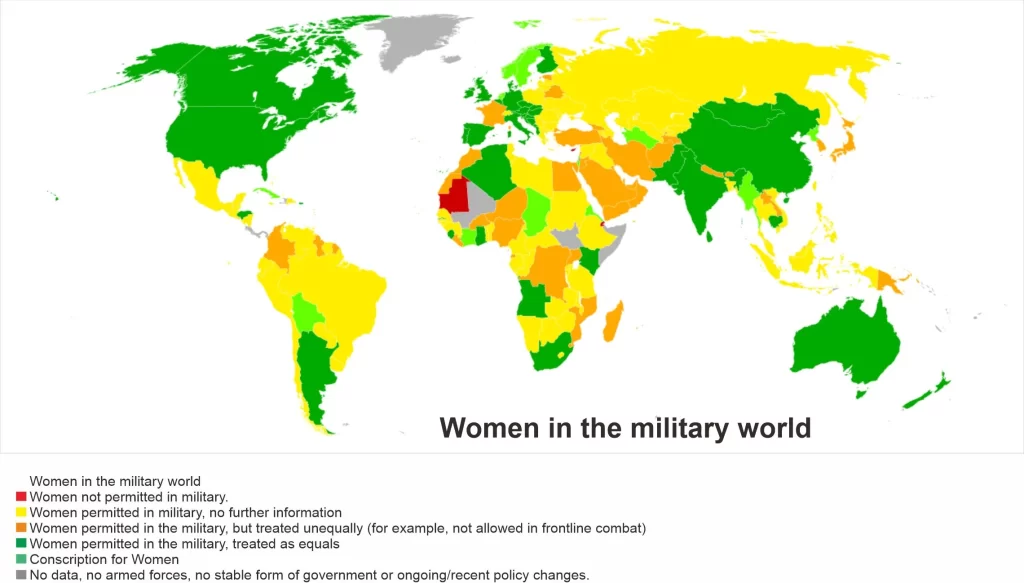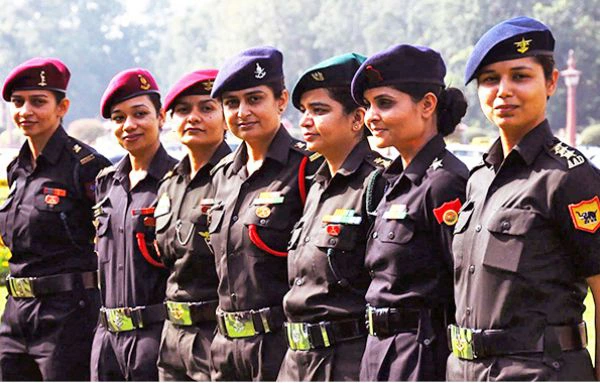Women officers in the Indian Army are set to climb the career ladder with the Army now conducting special selection boards to promote them to the rank of select-grade colonel for the first time in a move aimed at bringing about gender parity, offering them command assignments in select branches, and giving them new hard-earned identities.
For the first time, women officers will be able to command troops in the Indian Army, and be assessed for their leadership skills.
Select-grade means the officers are selected for promotion based on merit, rather than on the basis of time spent in service. To start with women officers from the 1992 to 2006 batches were considered for promotion to Colonel.
Background
Women were inducted in the Army as early as 1992. Women officers who were inducted into the Army were inducted as Short Service Commission (SSC) officers in 1992 and in the years after did not have the choice to opt for permanent commission. JAG and Army Education Corps were exceptions, where a permanent commission was opened for them in 2008.
An officer in the Army is promoted to the rank of Colonel only after serving between 16 and 18 years, based on certain criteria such as annual confidential reports and various courses.
Supreme Court order of 2020
In 2019, the Army changed its rules allowing SSC women officers to opt for permanent commission who would have otherwise retired after 14 years of service. However, this was not retrospective, and applied only to the batches of women officers starting their career in the Army in 2020.
With the landmark Supreme Court judgment of February 2020, permanent commission was granted to women officers with retrospective effect. This opened the doors for their further growth and promotions in the Army, which has been of late opening leadership and higher management courses for women.


Current Roles
Women officers in many streams of the Army, including the Army Air Defence, Signals, Engineers, Army Aviation, Electronics and Mechanical Engineers, Army Service Corps, Army Ordnance Corps, and Intelligence Corps will be commanding units.
They are still not eligible in core combat arms such as Infantry, Mechanised Infantry and Armoured Corps, as the Army is not open to women fighting wars at the borders as foot soldiers. Much of this resistance stems from past instances of male soldiers being taken as prisoners of war and tortured by the enemy. However, the Army has recently decided to open the Corps of Artillery, a combat support arm, to women.
Women officers have been inducted into all branches of the Navy, and they will be eligible for permanent commission in the future. Women officers can command shore-based units and, as they join the service and become eligible for permanent commission, they would be able to command ships and air squadrons.
The IAF has opened all branches for women officers, including the fighter stream and the new weapon systems branch. As they are granted permanent commission based on eligibility and vacancies, they will be eligible to command units in the future.
Numbers in the Services
The Army, being the largest of the three services, has the largest number of women officers at 1,705, followed by 1,640 women officers in the IAF, and 559 in the Navy. This data was submitted by the government to Parliament last year.
Women soldiers are also being inducted through the Agnipath entry scheme. The first batch of over 100 women Agniveers will join their training centre in Bengaluru in March 2023.
Army has also started deployment of women soldiers in joint exercises with friendly foreign countries and in peacekeeping missions.
Significance
The new move grants women officers parity with their male counterparts. Earlier, with a limited period career in the force, there were no promotion avenues for women officers to become a Colonel and command a unit like male Army officers.
It is not that women officers did not reach the rank of Colonel or beyond in the past, but they were only in two branches – the Judge Advocate General (JAG) branch and the Army Education Corps – where they were granted permanent commission in 2008.
However, these were staff appointments – which are more administrative in nature – and not purely command appointments in which an officer commands troops on ground.
Comments
Sooner than later, the armed forces will have to open direct recruitment for soldiers apart from officers. The ultimate goal should be a gender neutral and merit-driven entry system. However, initially, for administrative reasons to create the necessary infrastructure. The US military, which follows a merit-driven entry service in all arms including fighting arms and services, has 15-16 per cent women serving across all ranks.
It is not practical to raise and maintain gender-based units. The armed forces will have to create the necessary mixed gender-based infrastructure particularly in field areas.
The issue of physical fitness standards of women is another area of concern. In the US Army gender and age neutral standards led to a large number of failures amongst women. There is a need for the armed forces to carry out a scientific study to review their physical fitness standards.













